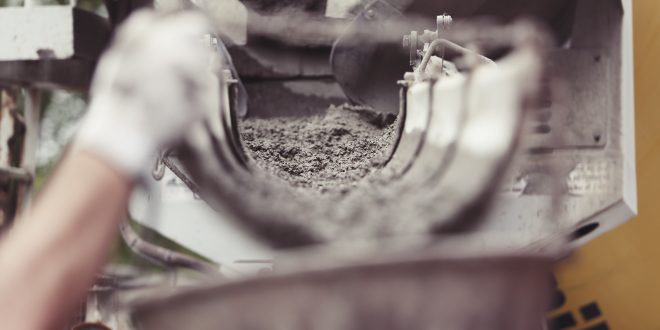The construction industry is undergoing a significant adjustment in recent years, with global trends leaning toward more sustainable sourcing and building practices. With green certifications such as Leadership in Energy and Environmental Design becoming widely implemented in commercial and residential construction, the industry is adapting to new standards.
Concrete is a complex subject when it comes to sustainability. The main material in it is cement, which is a particularly carbon-intensive product. Cement production accounts for 8% of global greenhouse gas emissions. Around 10 billion tons of concrete are manufactured every year.
However, scientists all around the world have been working to find an eco-friendly alternative to concrete. Green concrete is often composed of more sustainable aggregates, often replacing portland cement with another substance, such as fly ash. Green concrete production decreases dependence on fossil fuels and requires less natural resources like limestone.
The Impact of Concrete
Concrete’s impact extends far beyond the energy and resources required for its production. The amount added to undeveloped land is the equivalent of eight New York Cities, annually.
However, the path toward a green concrete is anything but linear. While various solutions have been proposed, no single solution has been established within the industry. One of the tricky parts of affecting change in the production of concrete is the lack of economic incentives. The material is relatively cheap and in high demand.
One solution is to reduce concrete’s impact by extending its lifecycle. The ability to recycle concrete would lower the amount of concrete that becomes waste material. Most concrete from demolition projects or surplus from development ends up in landfills.
Recycled concrete is the process of breaking it down and repurposing it in another application. This extends its lifecycle and has the potential to be cost-effective for contractors who have excess materials at the end of a project.
Concrete Innovation
The search for greener concrete has yielded a multitude of fascinating results. A recent discovery proposes a form that can actually capture and store carbon dioxide and deconstruct airborne pollutants.
Students at MIT invented a type of concrete that uses recycled plastic to fortify cement. The chemical makeup of this greener concrete is stronger and more flexible than the original.
Despite the innovation of improved and more environmentally friendly concrete, it is unlikely that large-scale changes will take place any time soon.
Green concrete technology’s primary challenges are the fast construction styles of most buildings and the lack of information on the cost-savings of more efficient material use.
One factor in concrete’s sustainability rating is the distance required to ship materials. According to the U.S. Green Building Council, LEED certification requirements include the proximity of sourced materials to the jobsite. For construction sites with access to locally produced cement, the emissions saved by reducing transportation could be significant.
Changes in the Industry
Green concrete has the potential to affect the future of construction. As the foundation of our built environment since Roman times, advancing technology to create a more sustainable concrete will have the greatest impact on transforming how we build.
After water, concrete is the second most-consumed material in the world.
Innovation to concrete production and utilization will set the tone for the sustainability of the built environment of the future. Whether it is through improved processes of recycling concrete to extend its lifecycle or by sourcing aggregates that are less polluting, it will be integral to the sustainability of construction moving forward.
With the construction industry looking to minimize its carbon footprint, the most essential piece of the puzzle will be finding a way to make green concrete a standard practice.



